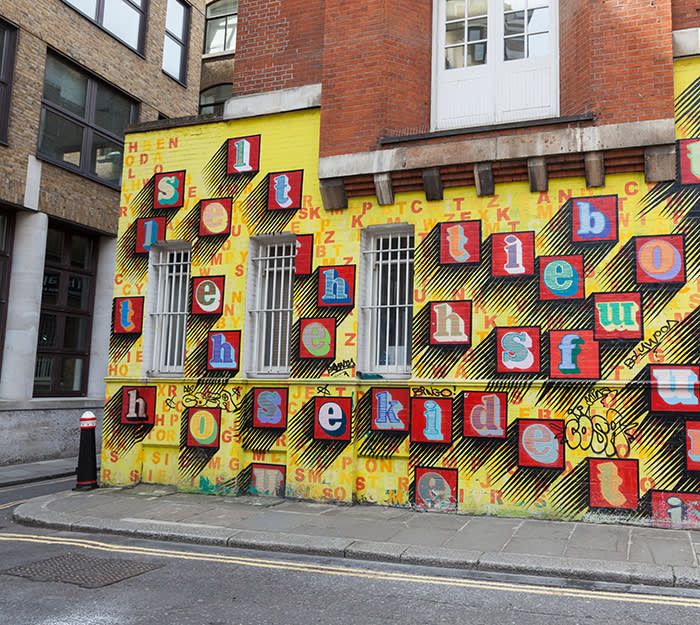Exploring Urban Street Art: Colorful Murals and Graffiti Culture
In the midst of concrete jungles and bustling city streets lies an art form that captivates and inspires: urban street art. From vibrant murals adorning building facades to thought-provoking graffiti hidden in alleyways, exploring urban street art unveils a world of creativity, expression, and cultural significance.
What is Urban Street Art?
At its core, urban street art encompasses a diverse range of artistic expressions created in public spaces. It's a dynamic art form that thrives on the streets, often challenging traditional notions of art and inviting dialogue on social, political, and cultural issues. From large-scale murals to intricate stencil work, street art transforms ordinary city landscapes into vibrant galleries.
Key Aspects of Urban Street Art
1. Creativity and Innovation:
One of the most striking aspects of urban street art is its boundless creativity. Artists push boundaries, experimenting with new techniques, materials, and styles to bring their visions to life. Whether it's using spray paint, stencils, wheat paste, or even installation art, street artists constantly innovate to make their mark on the urban landscape.
2. Social Commentary:
Many street artists use their work as a platform to address pressing social issues. Through powerful imagery and symbolism, they raise awareness about topics such as inequality, environmental degradation, and human rights. From poignant portraits to provocative slogans, street art serves as a medium for social commentary and activism, sparking conversations and prompting viewers to reflect on the world around them.
3. Community Engagement:
Urban street art often fosters a sense of community and belonging. Street artists collaborate with local residents, businesses, and organizations to beautify neighbourhoods and revitalize public spaces. Murals become landmarks, drawing tourists and locals alike to explore their vibrant surroundings. In this way, street art transcends individual expression to become a collective experience that enriches urban communities.
4. Transient Nature:
Unlike traditional art forms housed in galleries and museums, urban street art is inherently transient. Its ephemeral nature adds to its allure, as artworks may be painted over, damaged, or removed over time. This impermanence challenges viewers to appreciate street art at the moment, embracing the fleeting beauty of each piece before it disappears or evolves into something new.
Relevance of Urban Street Art
In an increasingly urbanized world, urban street art plays a significant role in shaping our cultural landscape. Here are some reasons why exploring street art is more relevant than ever:
1. Cultural Expression:
Street art reflects the diversity and vibrancy of urban cultures around the world. From the colourful murals of Brazil's favelas to the gritty graffiti of New York City, each piece tells a story of its creator's experiences, identity, and heritage. By exploring urban street art, we gain insight into the rich tapestry of global culture and celebrate the voices of marginalized communities.
2. Public Dialogue:
Street art serves as a catalyst for public dialogue and debate. Whether it's sparking conversations about politics, gentrification, or environmentalism, street art has the power to engage viewers and challenge societal norms. By exploring the messages embedded in street art, we confront pressing issues and confront our own perspectives, fostering a more informed and empathetic society.
3. Urban Revitalization:
In neglected or blighted urban areas, street art can be a catalyst for revitalization and renewal. Murals and graffiti transform derelict spaces into vibrant cultural hubs, attracting investment, tourism, and community engagement. By beautifying neglected neighbourhoods, street art contributes to the physical and social regeneration of urban environments, creating safer, more inclusive spaces for residents and visitors alike.
4. Global Movement:
Urban street art has evolved into a global movement, transcending geographic and cultural boundaries. Artists collaborate across continents, sharing techniques, ideas, and inspiration through social media and international festivals. By exploring street art from different regions, we gain a deeper understanding of global issues and connect with communities around the world, fostering solidarity and cultural exchange.
Conclusion:
Exploring urban street art offers a fascinating glimpse into the intersection of art, culture, and urban life. From the bustling streets of metropolises to the quiet corners of forgotten alleyways, street art invites us to see the world with fresh eyes and embrace the beauty of everyday surroundings. As we wander through city streets, let us pause to admire the colourful murals and provocative graffiti that adorn our urban landscapes, for they are not just decorations, but windows into the soul of our cities and the people who inhabit them. So next time you pass by a mural or stumble upon a hidden piece of graffiti, take a moment to stop, reflect, and explore the vibrant world of urban street art. Who knows what treasures you might discover along the way?
So, are you ready to dive deeper into the captivating realm of urban street art? Grab your camera, lace up your sneakers, and embark on an adventure through the colourful murals and graffiti-strewn alleyways of your city. There's a world of creativity waiting to be explored, and it's just around the corner.








Comments
Post a Comment